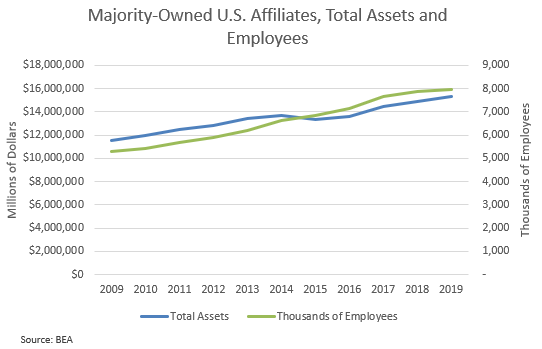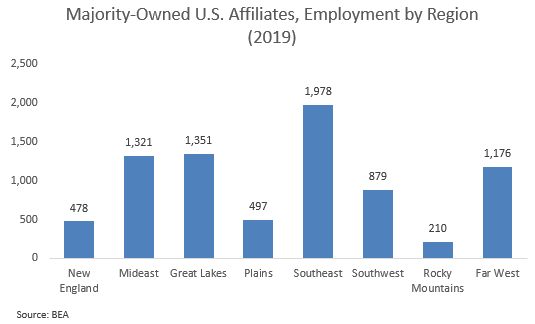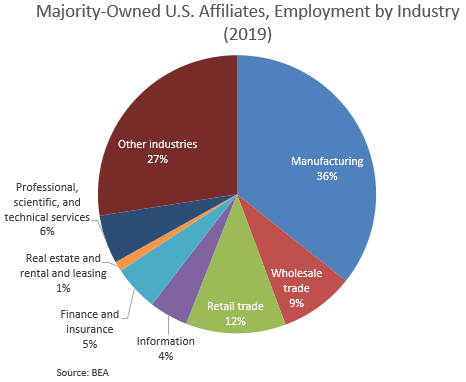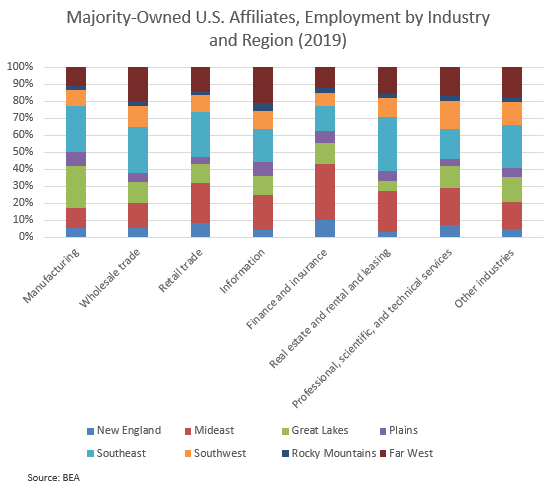
The U.S. Bureau of Economic Analysis (BEA) tracks information related to foreign direct investment (FDI) in the United States in terms of U.S. affiliates of foreign companies. The BEA conducts mandatory surveys of U.S. affiliates of foreign multinational enterprises to collect data needed to analyze the characteristics, performance, and economic impact of these firms. Data related to the financial structure and operations of U.S. affiliates of foreign parents is available on the BEA’s website.
What is the data telling us?
A variety of data is available, including FDI activity by industry and state. As of 2019, the most recent year for which data is available, U.S. affiliates of foreign multinational enterprises had over $15.3 trillion in total assets and over 7.9 million total employees. This is a 33% increase in total assets and a 50% increase in total employees since 2009, indicating that employment at these firms is growing at a faster rate than total assets.
At the regional level, employment in U.S. affiliates of foreign multinational enterprises is concentrated in the southeast with Florida, Georgia, and North Carolina accounting for the highest portions of total employment.

By industry, manufacturing accounts for the highest number of jobs nationally, at 36%. Retail trade is also a driver of employment at 12%. This is followed by wholesale trade (9%), professional, scientific, and technical services (6%), finance and insurance (5%), information (4%), and real estate (1%). The remainder (27%) is in other industries.
Regionally, finance and insurance is particularly prevalent in the Mideast, real estate in the southeast, and information in the far west.


Why is this important?
Understanding trends in foreign direct investment is important to economic developers because it brings many economic benefits to the region and community within which it occurs. FDI increases the creation of capital within a community, thereby improving local supply chains, productivity, and increasing multiplier impacts. This article provides just a brief snapshot of the FDI data that is available through the BEA. For more information, please see their website.
Image Source: Adobe Spark and Camoin Associates





